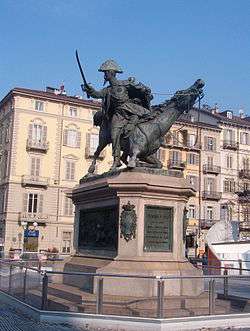Alfonso Balzico


Alfonso Balzico (October 18, 1825 – February 3, 1901) was an Italian sculptor. He was born in Cava de' Tirreni, near Salerno in Italy and died in Rome.
Biography
After completing studies in literature, he began sculpting in wood, then marble, and was then awarded a stipend to study at the Academy of the Arts in Naples. In Naples, he won a silver medal and a further award for a submission of a clay model of Procris dying in the Arms of Cephalus, which he presented to the Provincial Council of Salerno. Another prize was awarded to his bas-relief of Angel escorts St Peter out of Prison. He then traveled to Rome, where he completed a Flavio Gioia, Return of Dinah and Jacob, a St. John the Baptist, a Virgin of the purity, and a Noli me tangere.
He then traveled to Milan and Florence in 1858 and 1860, where his views turned away from Neo-classicism towards realism and romanticism. He returned to Naples, but his works attracted the attention of Victor Emanuel II, the King of Italy. He sculpted statues depicting the Naive and the Poor; Revenge; and an Owl. He moved to Turin.There he was commissioned a monument to Massimo d'Azeglio, and a highly dynamic equestrian monument to Ferdinand, 1st Duke of Genoa, where the Prince attempts to stand up in mid-battle, while his wounded horse falls. He also sculpted a Cleopatra, and help design coins and medals. There he painted several portraits and created busts of the Crown Prince of Portugal, Prince Napoleon, of Ambassador Nigra.[1] In 1866 he became the sculptor of the House of Savoy. In 1875 he went to Rome and in 1900 his statue of Flavio Gioia won the gold medal at the Exposition Universelle, Paris, one year before his death.
Notes and references
- ↑ Dizionario degli Artisti Italiani Viventi: pittori, scultori, e Architetti., by Angelo de Gubernatis. Tipe dei Successori Le Monnier, 1889, page 28-29.
External links
-
 Media related to Alfonso Balzico at Wikimedia Commons
Media related to Alfonso Balzico at Wikimedia Commons